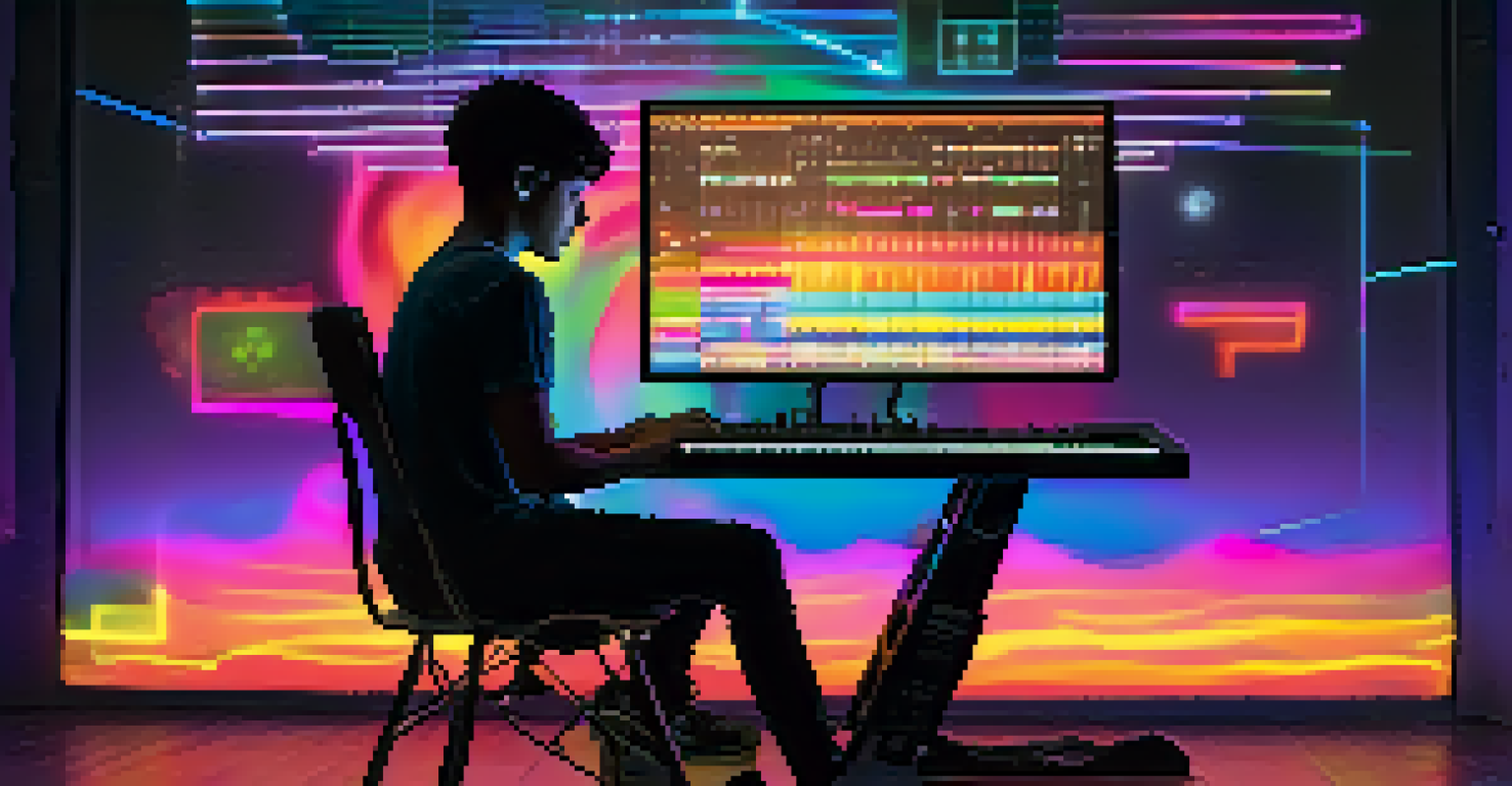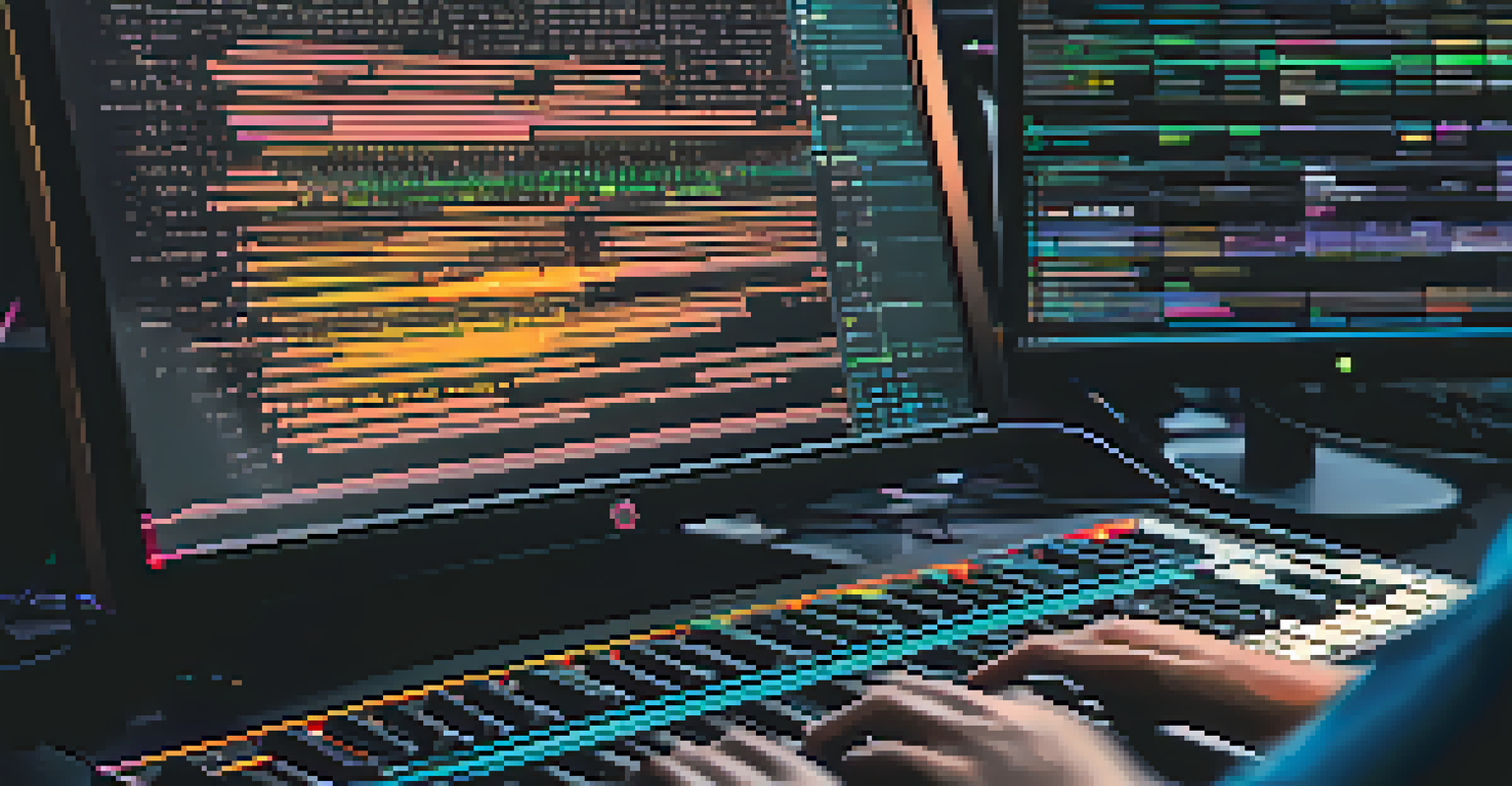Integrating Coding and Music: A New Educational Frontier

The Intersection of Coding and Music Education
In today's digital age, coding and music are more interconnected than ever. Both fields rely on creativity, pattern recognition, and problem-solving skills. When combined, they create a unique educational experience that fosters both technical and artistic abilities in students.
Music is the shorthand of emotion.
Imagine a classroom where students compose music using code, transforming abstract algorithms into beautiful melodies. This innovative approach not only makes coding more engaging but also allows students to express themselves in new ways. By integrating coding into music lessons, educators can attract a wider range of learners who may not have considered traditional STEM subjects.
Moreover, this blend encourages collaboration among students. Working together on projects, they share ideas, troubleshoot problems, and celebrate each other's successes, creating a community of learners who appreciate both technology and art.
Benefits of Learning Coding Through Music
Learning to code through music provides numerous benefits for students. First, it enhances cognitive skills by requiring learners to think critically about both rhythm and structure. This multi-faceted approach can lead to improved problem-solving abilities, as students learn to break down complex musical ideas into manageable parts.

Additionally, students develop computational thinking skills, which are crucial in today’s job market. When they create music, they learn how to sequence commands, debug errors, and iterate on their work—all valuable skills in the coding world. For example, when a student adjusts a code snippet to fine-tune a melody, they are practicing the same skills used in software development.
Coding Enhances Music Education
Integrating coding into music education fosters creativity and critical thinking, providing students with a unique way to express themselves.
Furthermore, this integration promotes emotional intelligence. Music is a powerful medium for self-expression, and when students learn to combine it with coding, they can communicate their feelings and ideas more effectively. This holistic development is essential for nurturing well-rounded individuals.
Tools and Platforms for Music Coding
There are several tools and platforms designed to help students explore the intersection of coding and music. Programs like Sonic Pi and EarSketch allow learners to create music using simple coding languages, making it accessible to all skill levels. These platforms are user-friendly and provide ample resources to help students get started on their musical coding journey.
Coding is like music; you have to hear it to understand it.
Sonic Pi, for example, is an open-source live coding music synth that lets users compose and perform music in real time. It not only teaches coding concepts but also encourages creativity, as students can experiment with different sounds and structures. Similarly, EarSketch uses Python or JavaScript to teach coding while students create their own tracks, blending education with fun.
These platforms make it easy for educators to introduce coding in music classes and vice versa. With a wide variety of resources available, teachers can tailor their lessons to suit their students’ interests, fostering a love for both music and technology.
Real-World Applications of Music Coding
The integration of coding and music is not just theoretical; there are real-world applications that demonstrate its effectiveness. For instance, many musicians today use coding to create innovative sounds and interactive performances. By understanding the coding behind music production, artists can push the boundaries of creativity and explore new genres.
Moreover, coding skills are increasingly in demand within the music industry. From developing audio software to designing music apps, professionals who can bridge the gap between technology and art are highly sought after. This trend highlights the importance of equipping students with these skills early on.
Real-World Skills in Music Coding
Learning coding through music equips students with valuable skills that are in high demand in the music industry, such as software development and audio production.
Additionally, coding and music can be applied in educational settings outside of traditional classrooms. Workshops, summer camps, and online courses are emerging that focus on this integration, providing students with opportunities to learn in dynamic and engaging environments.
Challenges in Integrating Coding and Music
While the benefits of combining coding and music are clear, there are challenges to consider. One significant hurdle is the varying levels of expertise among students. Some may have extensive musical backgrounds while others are more familiar with coding, creating a potential imbalance in the classroom experience.
Educators must find ways to accommodate diverse skill sets, ensuring that all students feel included and challenged. This may require additional training for teachers, enabling them to effectively guide students through both coding and musical concepts without overwhelming them.
Another challenge is resources. Not all schools have access to the necessary software or hardware to effectively teach music coding. As educators advocate for these programs, securing funding and resources will be crucial in overcoming this barrier and making this educational approach accessible to all students.
The Future of Music and Coding Education
As technology continues to evolve, the future of music and coding education looks promising. Educational institutions are increasingly recognizing the value of interdisciplinary learning, and many are integrating these subjects into their curricula. This trend indicates a shift towards teaching students skills that are relevant in today’s world.
Looking ahead, we can expect to see more innovative programs that combine coding with music, creating exciting opportunities for students. Schools may offer specialized courses where students can explore various aspects of music technology, from sound design to music production, all while honing their coding skills.
Challenges in Music and Coding
Educators face challenges like differing skill levels among students and limited resources, which can hinder the effective integration of coding and music.
Ultimately, this integration prepares students not just for specific careers but for a future where creativity and technology go hand in hand. By fostering these skills, educators are equipping the next generation to thrive in an ever-changing digital landscape.
Getting Started: Tips for Educators
For educators interested in integrating coding and music, starting small is key. Begin by incorporating simple coding activities into existing music lessons. For instance, you could use a program like Scratch to create a musical project, introducing coding concepts gradually while keeping the focus on music.
Collaborate with colleagues who have expertise in either music or coding. By pooling resources and knowledge, teachers can create a more comprehensive learning experience for their students. Team teaching can also provide a richer educational environment, allowing students to benefit from diverse perspectives.

Lastly, encourage students to experiment and explore. Provide them with the freedom to create their own projects, allowing room for creativity and personal expression. This approach not only makes learning fun but also empowers students to take ownership of their education, leading to a deeper understanding of both coding and music.